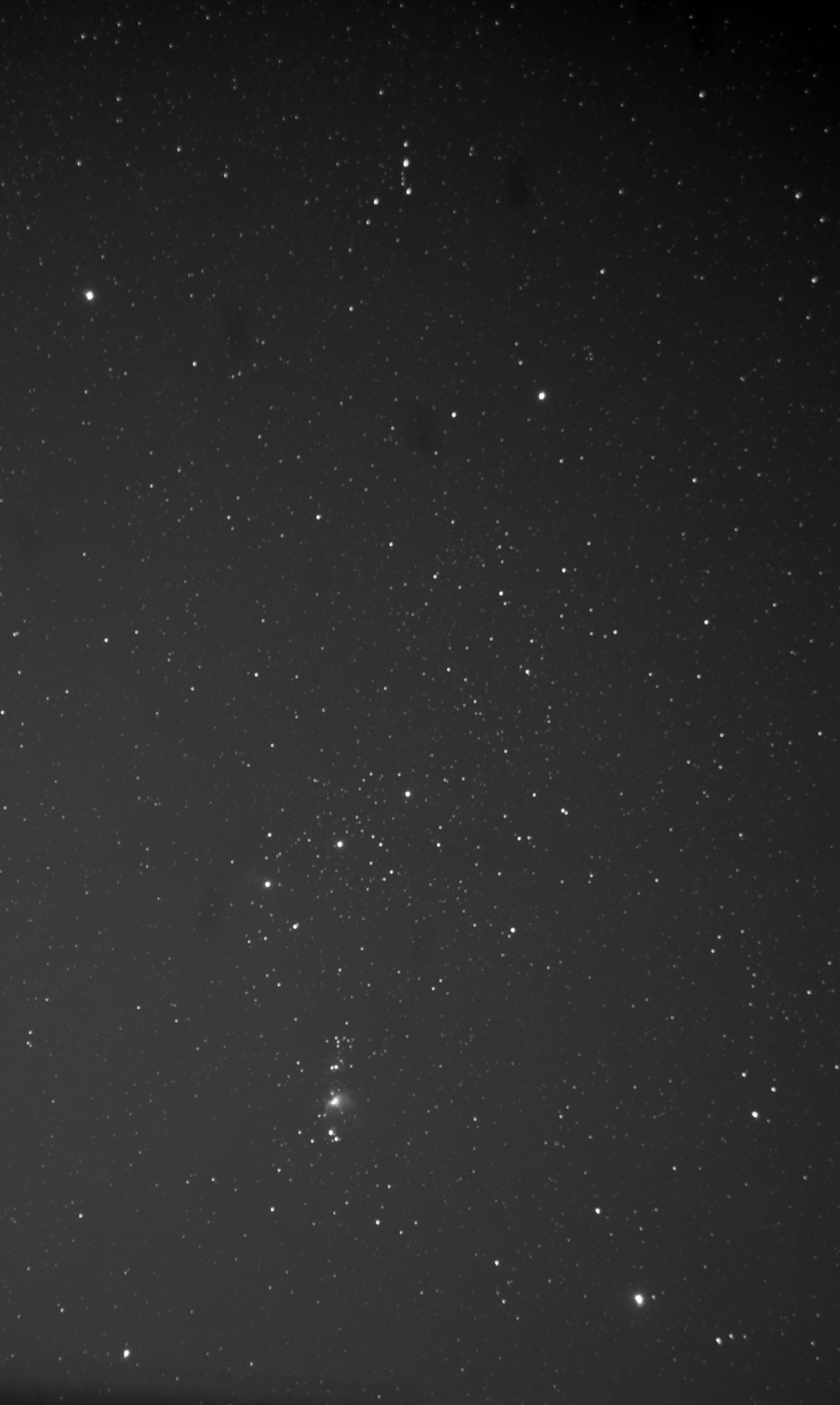I am doing some wide field experimenting with my ancient and honored Nikon D50 DSLR. The images below were taken through a 18-55mm zoom lens, set at a focal length of 55mm. This generates a FOV of 25.7°x17.0° with each pixel representing 30.5″ of arc. The camera is mounted on a GEM (Losmandy G-11) to prevent long exposures smearing the stars.
I haven’t come up with a way to flat field these images yet which is why there are some dark splotches visible. These are known as dust donuts and are the result of dust or other material somewhere in the light path. Additionally, the camera was manually focused resulting in a soft look to the stars.
The first image is centered between the open star clusters Pleiades and Hyades. Most of the image is in the constellation Taurus. The bright star at the bottom right is the star Aldebaran. The ‘V’ shaped Hyades, the lower cluster, forms the head of the Bull with Aldebaran representing the eye. The orientation of this image is north to the left and east down and is slightly cropped to remove the tree line along the southern edge.

Taurus [M:17x60s] (mouse over for labels.)
The second image contains most of the constellation Orion. Visible in the ‘sword’ is the Orion nebula (M 42;NGC 1976) and just at the limit of visibility is a hint of the Flame nebula (NGC 2024) next to Alnitak. Curiously, M 42 is not identified in the annotated image. The orientation of this image is north up and east to the left.

Orion [M:30x60s] (mouse over for labels)
My next steps will be to try some different techniques to eliminate what appears to be some external reflections in the images and to add in the color. I like the scale of the image when the lens is set to 55mm and the optical distortion at the edge of the FOV is not as extreme as when the lens is set to a faster focal length. I think I will add this configuration to my list. I will also look for an affordable 50-55mm non-zoom lens.